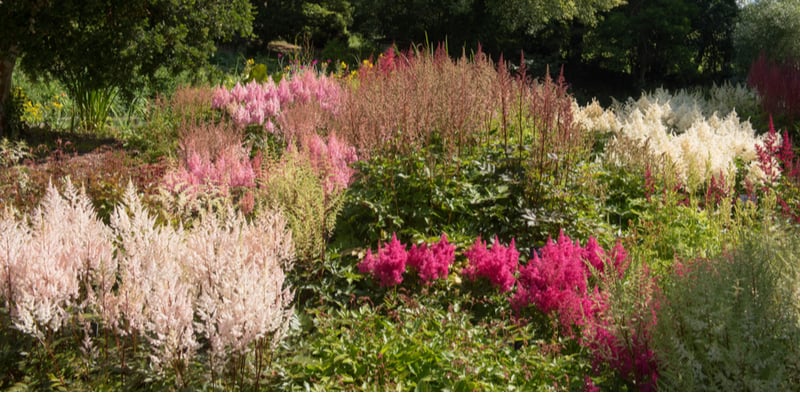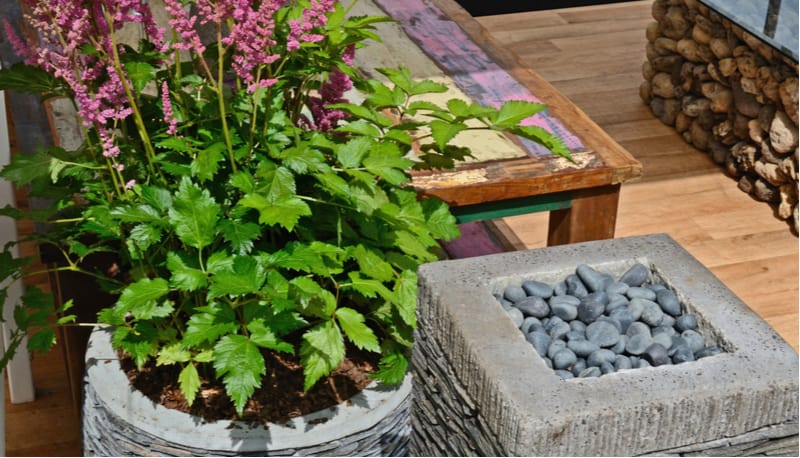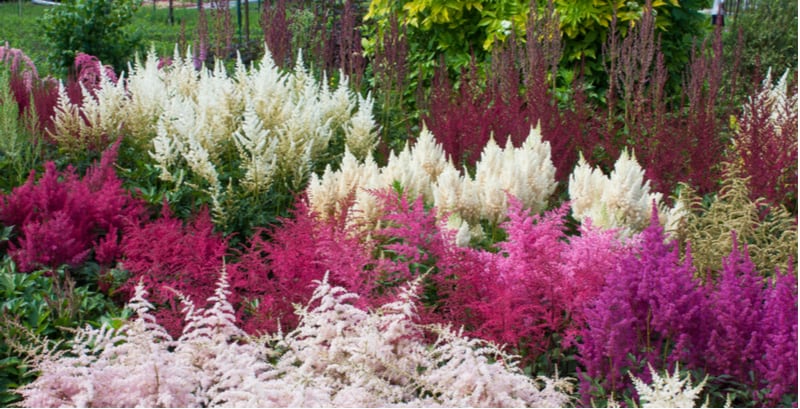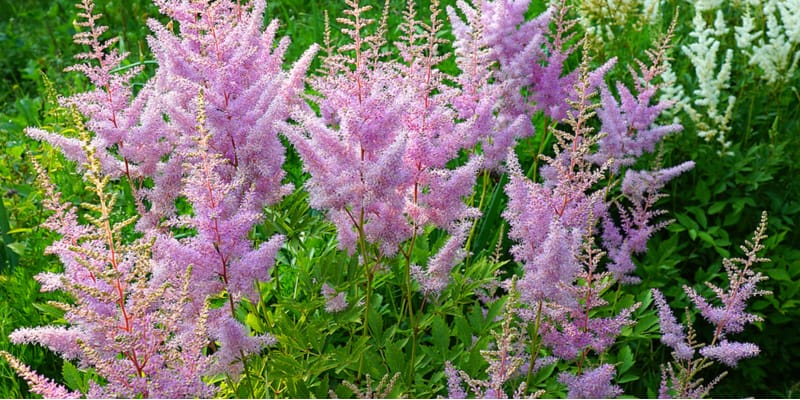Astilbes are valuable plants that bring with them a lot of texture and colour to shady areas of your garden where other plants don’t necessarily grow. They are very well known for their lace-like ferny green foliage as well as the plumes of feathery flowers that are produced from the end of spring through the summer. You can find a variety of sizes, including smaller dwarf varieties that reach around 20cm in height for the…
Astilbes are generally not too difficult to grow in pots and containers, as long as you have a semi-shady area in your garden and a good quality soil-based compost to help retain moisture. They add a delightful splash of colour and you can find compact, dwarf varieties if you are simply filling a small space or using a smaller container. Alternatively, there are taller cultivars if you want something a little taller. How to grow…
Astilbe plants offer a range of stunning colours and can turn an otherwise boring back garden into something surrounded by plumes of brightly coloured flowers and lace-like foliage. Best of all they also grow in moist soil in a shady position where not much else will thrive. These plants vary in size and colour so there are some varieties that are shorter, about 20-30cm and others that are perfect for adding a vertical back drop…
If you are going to divide an existing parent plant, you can do it very easily at multiple points throughout the year. You have the option of taking your divisions and transplanting them immediately, or hanging onto them and transplanting them at a later date. When should you divide Astilbes? You can successfully divide your Astilbe in the autumn or at the beginning of spring. As is the case with most perennials the latter is…




